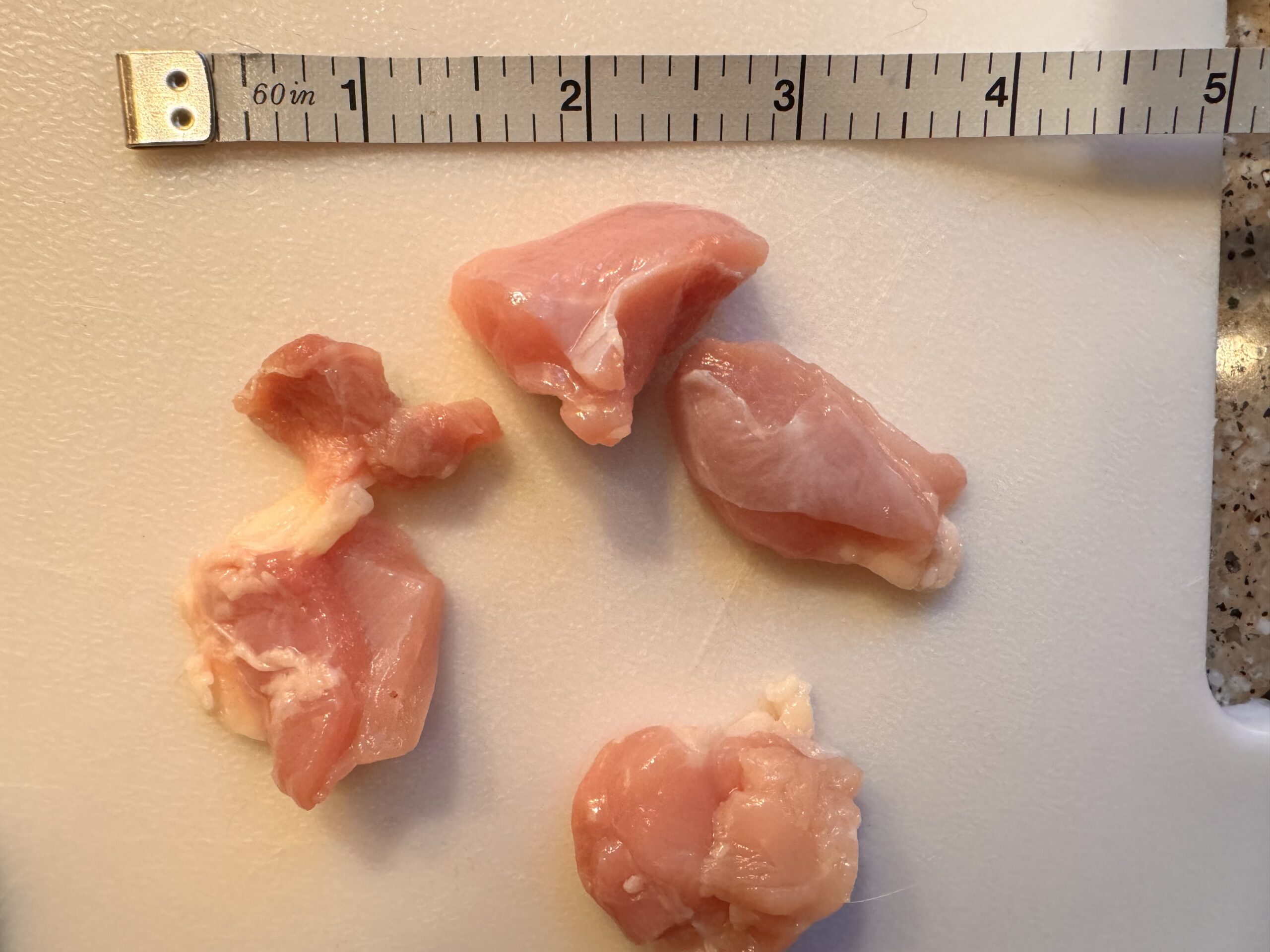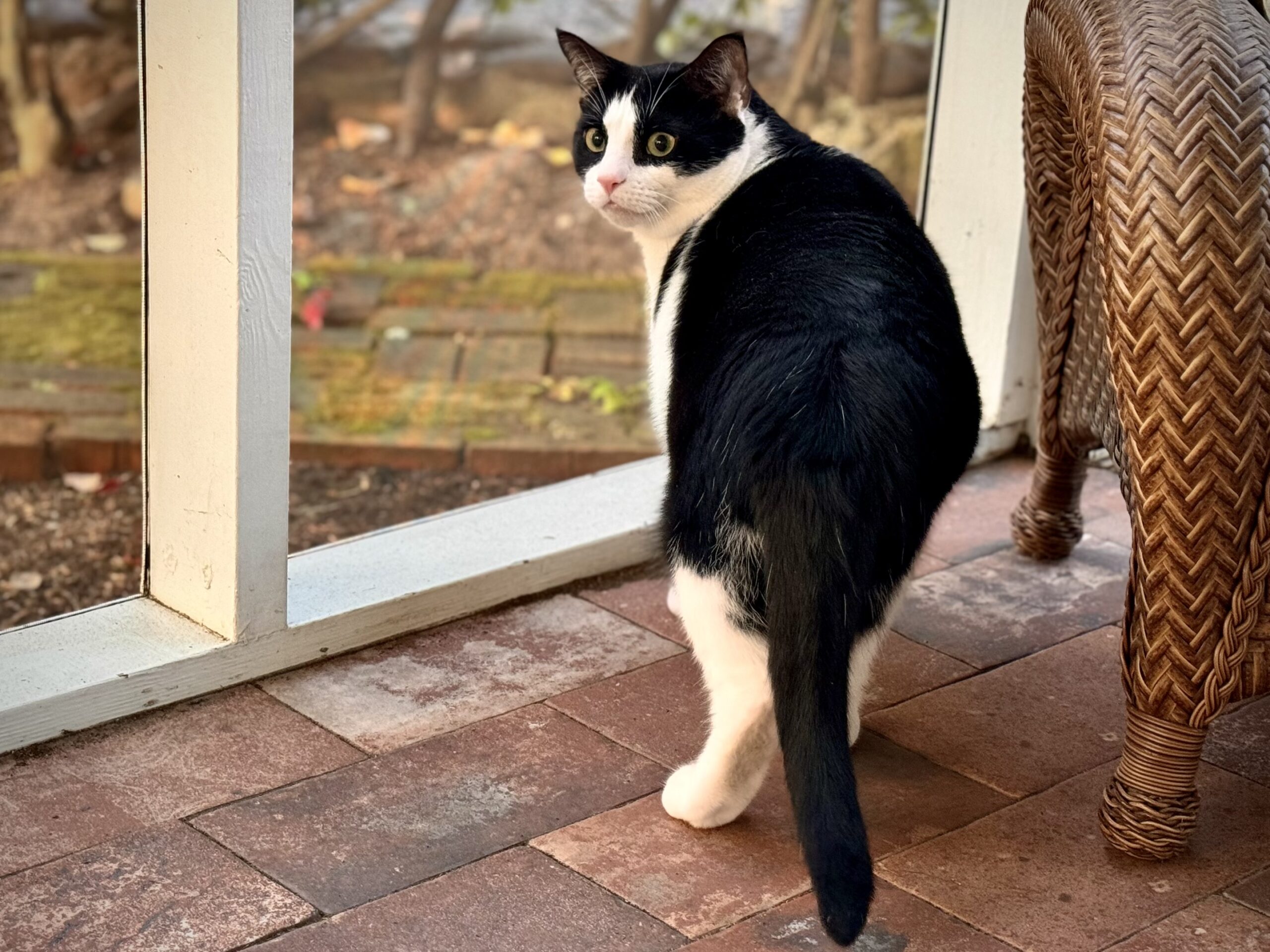Cats are mighty accommodating to humans who bring them into their homes. In exchange for shelter, food, affection, human love, and lifetime medical care, they are asked to give up a lot of stuff that comes naturally to them: hunting for live prey, reproducing, and making their own choice about where to pee and poop just for starters. It’s remarkable how much we ask of them — and how much they comply with.
My preoccupation has, for decades now, revolved around what we feed these obligate carnivores. The genesis of this website grew out of my realization that the closer we stick to the nutrient profile of a cat’s natural prey, the better the conditions are to support vibrant health.
With the recent arrival of an adult rescue cat, Frankie, on the scene, I’ve been revisiting some of the early lessons learned about feeding these creatures in a way that comes as close as we can — or our comfort level allows — to the way Mama Nature intended. Cats are built from the ground up to stalk, kill, and devour their prey. We can help them experience the “stalk and kill” instinct with toys, but what about the devouring part? A cat’s prey doesn’t come pre-ground.
One often-overlooked dimension of feeding cats as close to the way that nature intended is the texture of the food.
A small and cool thing we can do, for those cats that are willing to go along with it? We can include in their meals or as “snacks” mouse-sized or thereabouts chunks of raw muscle meat. Here’s Frankie working on snack of chunked meat. The first couple of times I offered it, he initially licked the meat; it took him a bit to work out using those molars, but this boy genius quickly figured it out.
Why offer chunks?
The main reason I like encouraging “chunk eating” is to support oral health and provide an opportunity for jaw exercise. There’s also the satisfaction I sense when I see a cat using their mouth the way they would when it’s time to eat what they’ve killed.
The action of shearing and gnawing on meat is a bit like nature’s toothbrush. And if you’re not already hip to the notion that dry food does not clean teeth, maybe take a peek at this. More than a few experienced veterinarians and cat-savvy experts that I trust have done a better job than I ever could busting the myth that dry food helps keep a cat’s teeth healthy — and in fact may make dental problems more, not less, likely.
Chunks can help keep clean teeth clean. Chunks won’t clean teeth that already have tartar.
How to do it — and what size?
There’s no one “correct” way to offer chunks. Some folks like to include meat chunks in homemade food mixed in with the ground meat, bones, and organs. I’m fond of buying skinless/boneless thigh meat and cutting it into mouse-sized (or smaller, but not too small) pieces and offering as a between-meal snack.

Remember: Feeding chunks is no substitute for routine dental care and cleaning that may be needed. Chunks won’t clean existing tartar off a cat’s teeth.
Feeding chunks is no guarantee of good oral health. I’m no vet, but my anecdotal observation is that some cats seem to end up with lousy teeth, inflamed gums, and periodontal disease regardless of what we try to do to help them avoid those painful maladies. And on that, if your cat has had to have a full-mouth extraction, don’t fret. Many cats do beautifully after their teeth are gone and are spared years of discomfort and pain.
Feeding chunks is no substitute for regular dental exams and cleanings that may be needed. Eating chunks of food is not going to dislodge existing tartar, a precursor to gingivitis and other serious issues that can only be safely addressed by a qualified veterinary dentist while the cat is anesthetized. If you’d like to know more about feline periodontal disease, check this out to get started.
Happy feeding, team!

